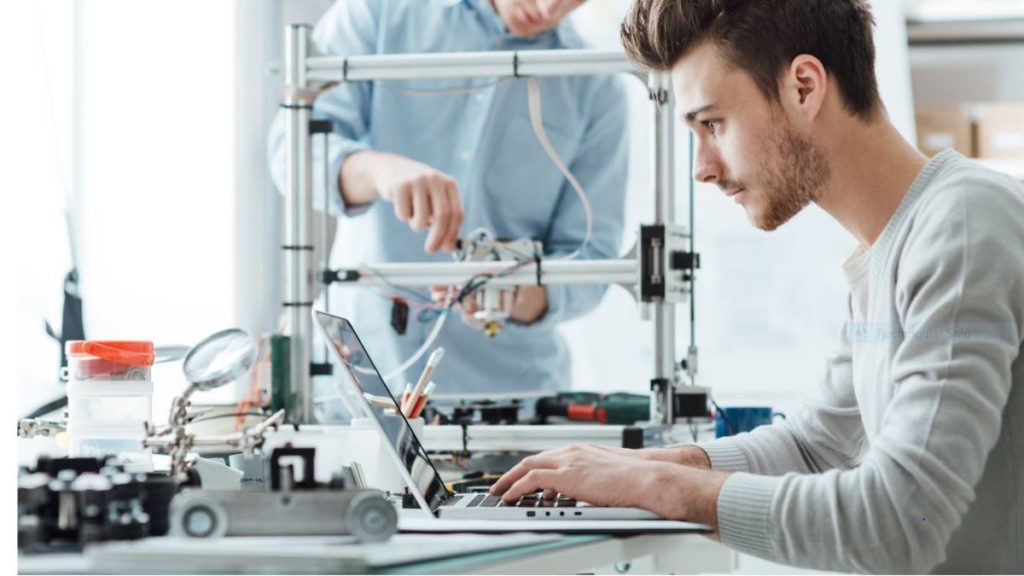Featured image by Stock-Asso
Known also as additive manufacturing, 3D printing is recognized for its ability to produce highly precise parts quickly and efficiently. In addition, 3D printing has numerous cost-effective benefits. In this guide, we explore how additive manufacturing helps companies save money.
RELATED ARTICLE: REDUCE COSTS FOR YOUR PRODUCT DEVELOPMENT IN 4 WAYS
1. 3D Printing Makes Prototype Design Easy
Businesses often create prototypes before approving a new product or component for mass production and making it ready for market. What’s more, a business might even design a number of prototypes throughout the product development process.
With traditional manufacturing, this is a time-consuming task, sometimes involving third parties in far-flung geographic locations. For these reasons, the process can take as long as a year.
But with 3D printing, engineers can design multiple prototypes quickly and continuously throughout all stages of development. This facilitates various minor changes in a short period of time, ultimately reducing costs.
2. It Minimizes the Cost of Traditional Tooling
Manufacturing conventional tooling equipment such as molds, jigs, and fixtures comes at an excessive cost and with lengthy lead times. But additive manufacturing can print these tools internally. Moreover, it does so quickly and inexpensively.
It can replicate missing parts and pieces, too, sometimes within mere hours. This helps businesses avoid costly production delays.
3. 3D Printing Gives Businesses Greater Market Potential
With conventional manufacturing, products that have multiple parts, attachments, and intricate features often require a considerable work force. They can also increase a company’s energy consumption. But 3D printing gives businesses the ability to avoid investing in large-scale manufacturing, saving both money and time.
Moreover, because additive manufacturing affords businesses the ability to shape and design an object in infinite ways, it broadens the scope of product innovation. In short, it offers engineers and business leaders the ability to come up with more profitable and sophisticated designs.
4. It Allows Businesses to Spend Less Money on Labor
Operating heavy industrial machinery takes skill and expertise. However, additive manufacturing does not require these skills because it relies on computers instead. Basically, it is a less labor-intensive and less costly technology.
Companies that base their operations on this technology require far fewer employees. They can also choose to use less costly materials and operate production machinery remotely. These factors give them greater control over costs.
5. Localized Production Saves Businesses Money
The digital nature of 3D printing and its lack of reliance on industrial molds and cutting tools makes way for more localized production. This means products are manufactured close to where they will be consumed or used.
Not only is this beneficial for the environment, but it also saves money on overseas and long-haul shipping, transportation, and tariffs.
Localized manufacturing is becoming increasingly prevalent, particularly since the COVID-19 pandemic has forced many manufacturers modify their production methods.
6. 3D Printing Broadens the Scope to Include Less Expensive Materials
3D printing allows for a more efficient use of raw materials.
In industrial terms, 3D printing is the process of adding layers upon layers of a material to form a desired shape, using data from a 3D CAD file. This process differs from traditional, subtractive manufacturing processes which remove material from an original object to create an end product or prototype. The cutting and machinery needed to remove the excess material costs money, as does the wasted material.
Conversely, the additive process produces less waste and forms more accurate shapes. 3D printing also produces lighter weight products more easily. This proves useful for a range of automotive and aerospace businesses, among others, that require lightweight materials.
Removing layers of a shape or design requires expensive drilling and cutting. Additive manufacturing is much easier and less expensive, producing lightweight parts without the need for expensive processes.
RELATED ARTICLE: 4 COST SAVING TIPS FOR A MANUFACTURING BUSINESS
3D Printing Offers Extraordinary Benefits for Businesses of All Sizes
According to the market research company Grand View Research, the global market for 3D printing is expected to grow to US $62.79 billion by 2028, a rate that is 21% higher than in 2021. Given the extraordinary benefits this type of manufacturing provides, this comes as no surprise.
As the demand continues for more sustainability and greater efficiency, so will companies’ insistence on greater profitability. Clearly, 3D printing represents far-reaching growth potential among businesses large and small all around the world.
RELATED ARTICLE: CHOOSING A PRECISION METAL STAMPING SUPPLIER
Does reading this article give you ideas about a business you might want to start? If so, browse our blog often to stay up-to-date on the latest trends and gain inspiration.
